Matt Sutherland
gamer level 3
1007 xp
1007 xp
followers
1
1
Use my invite URL to register (this will give me kudos)
https://boardgaming.com/register/?invited_by=mozartcup
profile badges
recent achievements

I'm a Real Player!
Claim that you have played a game today by clicking the "Played Today!" button on a game page 25 times.
Claim that you have played a game today by clicking the "Played Today!" button on a game page 25 times.

Gamer - Level 3
Earn Gamer XP to level up!
Earn Gamer XP to level up!

I Got What I Wanted
Add a game to your Owned list that was previously in your Wish list.
Add a game to your Owned list that was previously in your Wish list.

My First Heart
Show your loyalty for a game by clicking the "Heart" button on a game page.
Show your loyalty for a game by clicking the "Heart" button on a game page.

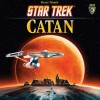






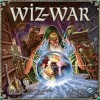





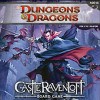



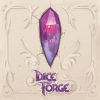














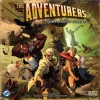













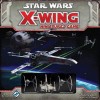










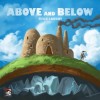



















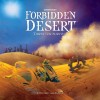





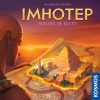














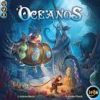







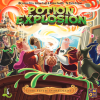
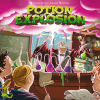



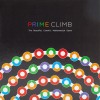


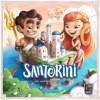








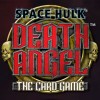




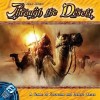
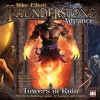

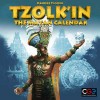



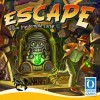
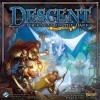


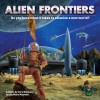






Macao
Introduction
In hobbyist circles there seems to be a constant dialog around theme and game mechanics. Some feel that a great board game – by definition – must be organized around an immersive theme. Others feel that this isn’t a necessary component, and that being tied to a theme can limit a designer’s freedom to develop innovative mechanics. For my part, though I think it is true that emphasizing a strong theme necessarily places limits on the otherwise abstract elements of game design, strong mechanics are still possible when placed in the hands of a cable designer – Vlaada Chvátil who designed Galaxy Trucker and Mage Knight comes to mind. That being said, there’s nothing wrong with freeing oneself from the trappings of a strong theme, and placing most of the focus on great mechanics, which is what the designer of Macao – Stefan Feld – usually does. To be sure, the immersion factor is still there, but it rests in the “machine” rather than the theme, which is what fans of the classic euro most enjoy anyway. Will you feel like a 17th century adventurer seeking his fortune in the ancient near east trading city of Macao? Not so much.
Components
The components are of decent quality. You get a quality (thick) game board. The player-specific components, though of thinner-than-I’d-prefer card stock, seem to be holding up well. The little colored wooden cubes are something my wife particularly likes. Finally, the game uses hobbit cards, which would really be annoying but for the fact that there’s no hand management (holding of cards in your hand) needed. The artwork is what you’d expect, effectively casting a veneer of generic theme that elevates the enjoyment of the game above what it would be for a pure abstract without distracting from the interesting mechanics.
Gameflow
In the game you’ll be rolling dice to determine the resources (cubes) to be used for the current turn as well as turns to come. Five dice of various colors will be rolled, and each player will have an opportunity to pick two of those dice to translate into the number and color of cubes to be distributed on a “wind rose”, a nifty devise which determines the resources a player will have in a given round. The actions one can take are varied…they include, 1) Activating People, Building, and Office cards (drafted into your tableau at the beginning of each round) that – depending on the type – have various effects throughout the game, 2) purchasing goods tiles from the main board that can later be sold at various ports, 3) Moving your ship on the main board to reach those aforementioned ports, 4) Moving your player marker on the “Wall” to either obtain or maintain first player status, and 4) Using activated cards to trade in cubes for different colored cubes, or to buy gold which can be used later to buy victory points. The only action where cubes are not used to do something is the actual buying of victory points with gold coins, the exchange rate for which is determined by the initial offering of cards at the beginning of each round. Whew!
Luck vs Strategy
There is luck involved in what cards will be in the offering at the beginning of each round, and the player that is ahead on the “Wall” will have first pick of that offering. This is a big advantage in the sense that it makes it easier for the first player to pursue and, perhaps, stick to a specific strategy early in the game. However, even if the first player remains the first player, there are counter-strategies to whatever strategy is being pursued, so it’s not necessary to get into a “wall war”. Obviously there is also luck involved with those dice rolls, but it doesn’t effectively sway the game in any decisive way since the players are drawing from the same pool and have significant control over how those cubes are allocated to their individual wind rose. Though one’s way of playing will be somewhat directed by the cards drafted, there remains enough choices for deep strategies to emerge after multiple plays.
Fun Factor
On the first play, one may find the number of choices (and paths to victory) overwhelming, so it starts off as feeling like a heavy game, and that feeling of “I don’t know what I’m doing” will be there. However, the first play won’t be a write-off. By the end it will have its hooks in you, and you’ll want another go at it. The second game is much more enjoyable and you’ll start pursuing specific strategies, avoiding the big mistakes that came out of the first experience. One of the fun aspects is the opportunity for great combination moves with the cards that are activated, whose abilities can be used once per turn. Pulling off great moves, especially later in the game when there are more resources, is rewarding.
Positives
Short play time – no more than an hour for the two player version
The mechanic of rolling dice to determine the type (color)/qty of resources and even the round on which they’ll be used, is unique and enjoyable.
Like many Stefan Feld games, the balance struck among the many things to do lead to multiple paths to victory. Exploring those paths is great fun.
Negatives
The planning out of your wind rose and taking of actions, with the given dice rolls and myriad choices before you, can lead to indecisiveness. It’s not really a problem for a 2 player game, but it may make a 4 player game drag on.
Some of the cards are considerably more powerful than others, though this aspect is somewhat mitigated by the difficult combination of cubes needed to activate them.